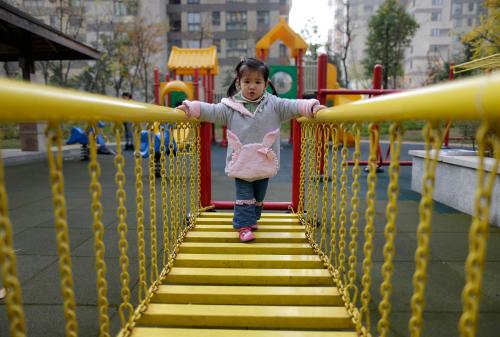The international development community has placed adolescent girls and secondary schooling at the center of girls’ education policy, and less attention to the gendered realities of girls and boys in early childhood. This oversight begs the question: Can gender and education issues at primary, secondary, and tertiary levels—and beyond—be tackled without paying attention to interventions in the early years?
In this video, Jin Chi, 2018 Echidna Global Scholar, describes the importance of gender in early childhood education policy around the world and particularly in China.
Studies from the psychological, sociological, neurobiological, and anthropological fields all point to the significance of early childhood care and education (ECCE) on a range of developmental outcomes relevant to gender equality, including the cognitive and affective formation of gender identity and stereotypes, and the range of skills learned by girls and boys through teacher-child interactions and gendered childhood play. Children begin to label the gender identity of others around two and a half years-old, and begin to understand gender stability around three and a half years-old. Recent research has found that gender stereotypes about girls’ and boys’ intelligence may be formed as early as age six. As such, in order to bridge the gender gaps that girls and women experience later in life, evidence suggests that it is critical to begin tackling gender bias early in life.
This raises the importance of gender responsiveness in early childhood teaching and learning—a topic that has gained traction among international advocates—but that has seen little action in country-level policy and practice. It is clear from the literature that early childhood teachers’ qualifications and training play a role in children’s learning outcomes. But what has received less attention is the role of early childhood teachers’ beliefs about gender, teachers’ own gender awareness, and how their expectations and practices can constrain the education and development of girls and boys. A gender approach would give teachers the awareness to create equality and equity for all children in education settings, helping girls and boys optimize their natural talents and developmental opportunities.
Observations from countries as diverse as Australia, Hong Kong, and Norway have shown that when kindergarten teachers manifest traditional gender values in the classroom, both teacher and student behaviors reflect gender stereotypes. Other studies illustrate how teachers’ beliefs can shape girls’ and boys’ choices, their exploration of self, and key socio-emotional skills such as connecting to other people, as well as other markers of well-being like self-confidence, peer acceptance, and social support. Yet opportunities for gender sensitivity training are limited. When teachers do have the opportunity to receive training on gender-sensitive approaches, however, girls benefit in positive ways. For instance, implementation of gender responsive pedagogy by the Forum for African Women Educationalists (FAWE) in several African countries found that girls’ self-esteem was enhanced when teachers brought gender awareness to the classroom and tailored teaching to the specific learning needs of girls and boys. In spite of this emerging body of evidence, few countries are focused on gender equality in early childhood teaching and learning, including China.





